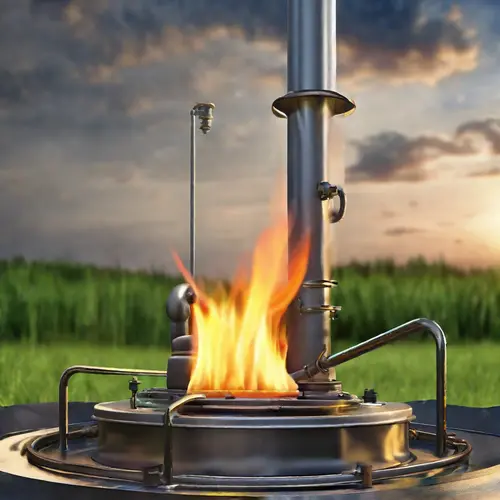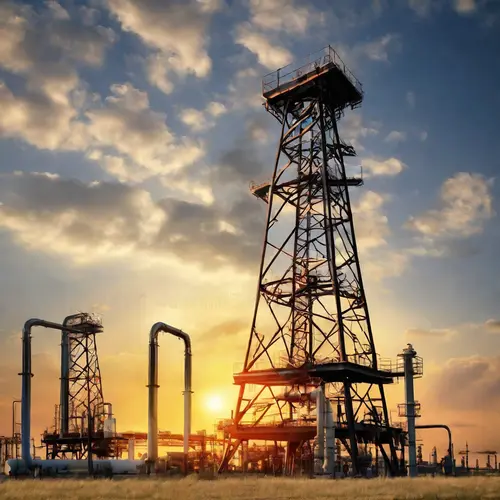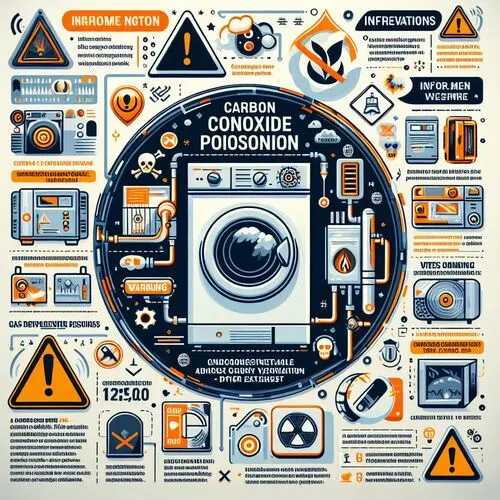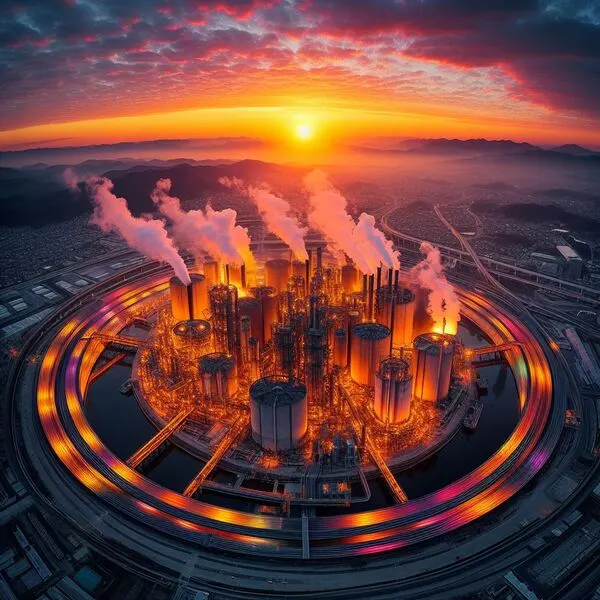The History of Natural Gas: From Ancient Flames to Future Prospects
The history of natural gas is an enthralling odyssey that spans the depths of ancient civilizations to the cutting-edge innovations of the modern era. A tale woven with threads of ancient flames, industrial revolutions, and global energy dynamics, the history of natural gas unfolds as a testament to human ingenuity and the relentless pursuit of efficient energy sources.
When did we start using natural gas in homes?
The use of natural gas in homes dates back to the early 19th century. In 1821, William Hart drilled the first commercial natural gas well in the United States, in Fredonia, New York. However, it wasn’t until the late 19th century that natural gas began to be widely used in homes. This was due in part to the invention of the Bunsen burner in 1885, which made natural gas a more efficient and convenient fuel source.
What was before natural gas?
Before natural gas, people used a variety of other fuels for cooking and heating, including wood, coal, and oil. Wood was the most common fuel in early America, but it was not as efficient as coal or oil. Coal became the dominant fuel source in the 19th century, but it was also a source of pollution. Oil began to be used in homes in the early 20th century, but it was more expensive than natural gas.
When did we switch to natural gas?
The switch to natural gas in homes began in the late 19th century and accelerated in the early 20th century. This was due to the availability of natural gas pipelines, which made it possible to transport natural gas to homes and businesses. By the 1950s, natural gas was the most common fuel source for homes in the United States.
What is the oldest source of fuel?
The oldest source of fuel is wood. Wood has been used for cooking and heating for centuries. It is a renewable resource, but it is not as efficient as other fuels.
What country was the first to use natural gas?
China was the first country to use natural gas. The Chinese used natural gas for boiling seawater and salt production as early as the 11th century.
What came first propane or natural gas?
Propane came first. Propane was first synthesized in 1834, while natural gas was not widely used until the late 19th century.
Is natural gas prehistoric?
Natural gas is a fossil fuel, which means that it was formed from the remains of dead plants and animals. This process took millions of years. So, in a sense, natural gas is prehistoric.
I. Ancient and Early Uses of Gas
A. Natural Gas Seeps and Ancient Civilizations
The utilization of natural gas can be traced back to ancient times. In Greece, the Oracle at Delphi harnessed natural gas flames for religious ceremonies, believing the gas to have mystical properties. In China, bamboo pipelines were used to transport natural gas, showcasing early engineering ingenuity.
B. Practical Applications in Ancient Times
Beyond religious rituals, early civilizations recognized the practical value of natural gas. It was employed for boiling seawater for salt production, providing a glimpse into its diverse uses. These early applications laid the foundation for the evolving role of natural gas in human societies.
II. Development of Manufactured Gas and Gas Lighting
A. William Murdoch’s Pioneering Experiments
The late 18th century saw significant progress in gas technology. William Murdoch’s experiments with coal gas in Scotland marked a turning point. His innovations paved the way for the development of manufactured gas, a precursor to natural gas, and its applications in gas lighting.
Whom is William Murdoch?
William Murdoch (1754–1839) was a Scottish engineer and inventor who played a significant role in the development of early gas lighting and steam-powered machinery. Born in Ayrshire, Scotland, Murdoch is best known for his pioneering work with coal gas and its application in practical settings.
B. Gas Lighting’s Impact on Urban Development
Gas lighting became a transformative technology in urban development. Britain led the way in establishing gas companies, and the United States followed suit with the creation of the Fredonia Gas Light Company. The introduction of gas lighting illuminated streets and homes, reshaping the nocturnal landscape of cities.

III. The Discovery and Utilization of Natural Gas in the United States
A. William Hart’s Natural Gas Well
In 1821, William Hart successfully drilled a natural gas well in Fredonia, New York, marking the first documented use of natural gas in the United States. This event heralded the beginning of a new era in energy exploration.
whom is William Hart?
William Hart was an American gunsmith and businessman who is widely credited with drilling the first commercial natural gas well in the United States. In 1821, Hart drilled a 27-foot well in Fredonia, New York, to capture natural gas that was bubbling to the surface of Canadaway Creek. This well was a significant breakthrough in the development of the natural gas industry, and Hart is often referred to as the “father of the natural gas industry.”
B. Technological Advancements in Drilling
The 19th century witnessed rapid technological advancements in drilling and pipeline construction, facilitating the extraction and transportation of natural gas. Its use as a primary fuel source for lighting and heating gained popularity, challenging the dominance of coal and electricity.
IV. The Advent of Automobiles and the Significance of Gasoline
A. Edwin Drake’s Crude Oil Discovery
In 1859, Edwin Drake’s discovery of crude oil in Pennsylvania set the stage for a shift in energy dynamics. The refining process yielded gasoline as a byproduct, initially considered a waste material.
whom is Edwin Drake?
Edwin Laurentine Drake (March 29, 1819 – November 9, 1880), also known as Colonel Drake, was an American businessman and the first American to successfully drill for oil.Drake was born in Greenville, New York, on March 29, 1819. He worked as a railroad conductor for several years before retiring due to poor health. In the mid-1850s, he became interested in the potential of oil as a fuel source, and he began experimenting with different drilling methods.
B. The Automobile Revolution
The invention of the automobile transformed the fortunes of gasoline. As internal combustion engines became the standard for transportation, the demand for gasoline skyrocketed, shaping the automotive industry and modern society.
C. Refining Advancements and Gasoline Production
Advancements in refining techniques further enhanced gasoline production. The refining process evolved to meet the increasing demand, solidifying gasoline’s role as a key player in the energy landscape.

V. Natural Gas in the Modern Era: Exploration, Production, and Utilization
A. Technological Innovations in Exploration
The modern era has witnessed remarkable technological innovations in natural gas exploration and production. Advanced drilling techniques, such as hydraulic fracturing, have unlocked previously inaccessible reserves, transforming global energy markets.
B. Global Significance of Natural Gas Reserves
The discovery of vast natural gas reserves has geopolitical and economic implications. Countries with substantial reserves become major players in the global energy arena, influencing diplomatic and economic relations.
C. Cleaner and More Efficient Energy Source
Compared to coal, natural gas is touted as a cleaner and more efficient energy source. Its combustion produces fewer greenhouse gas emissions, positioning it as a transitional fuel in the quest for a more sustainable energy future.
D. Expansion of Natural Gas Infrastructure
The expansion of natural gas pipelines has facilitated the efficient transportation of gas to end-users. This growth has reshaped regional and global energy dynamics, influencing pricing and supply chains.
E. Environmental Considerations and Ongoing Debate
While natural gas is considered cleaner than some alternatives, environmental considerations persist. The ongoing debate revolves around balancing the benefits of natural gas with its environmental impact, particularly in relation to methane emissions.

VI. Future Prospects of Gas: Challenges and Opportunities
A. Transition to Renewable Energy
The global shift towards renewable energy sources poses challenges for the future role of gas. Governments and industries must navigate this transition, considering the economic and environmental implications.
B. Addressing Environmental Concerns
To ensure a sustainable future, addressing environmental concerns related to natural gas extraction and usage is imperative. Technologies for mitigating methane emissions and minimizing environmental impact require ongoing development.
C. Technological Advancements in Gas Utilization
Continued innovation in gas storage, transportation, and utilization is crucial. Advancements in these areas can enhance efficiency, reduce environmental impact, and contribute to the overall sustainability of gas as an energy source.
D. Gas as a Bridge Fuel
As societies transition to a low-carbon economy, natural gas has been proposed as a bridge fuel. Its role in providing a reliable and less carbon-intensive alternative during this transition period is subject to ongoing discussion and evaluation.
E. Balancing Energy Security, Sustainability, and Economic Growth
Achieving a balance between energy security, environmental sustainability, and economic growth is the key challenge for the future of gas. Policymakers, industry leaders, and communities must collaborate to develop solutions that address these intertwined considerations.
Gas dryers and Natural Gas
Gas dryers, a staple in modern households, exemplify the efficient utilization of natural gas in everyday appliances. These appliances operate on the principle of harnessing the clean-burning properties of natural gas to produce heat, expediting the drying process for clothes. Unlike electric dryers, which rely on electrical resistance to generate heat, gas dryers employ a burner to ignite natural gas, creating a flame that heats the air used to dry clothes. This not only results in faster drying times but also tends to be more cost-effective, given the often lower cost of natural gas compared to electricity.
Gas dryers thus stand as a practical manifestation of how natural gas, with its reliability and energy efficiency, contributes to the convenience and functionality of modern households, aligning with the ongoing efforts to optimize energy usage and reduce environmental impact in our daily lives.
References:
- Yergin, D. (2006). The Prize: The Epic Quest for Oil, Money, and Power. Free Press.
- Maugeri, L. (2006). The Age of Oil: The Mythology, History, and Future of the World’s Most Controversial Resource. Praeger Publishers.
- O’Connor, M. (2005). The Oil and Gas Industry: A Nontechnical Guide. PennWell Books.







